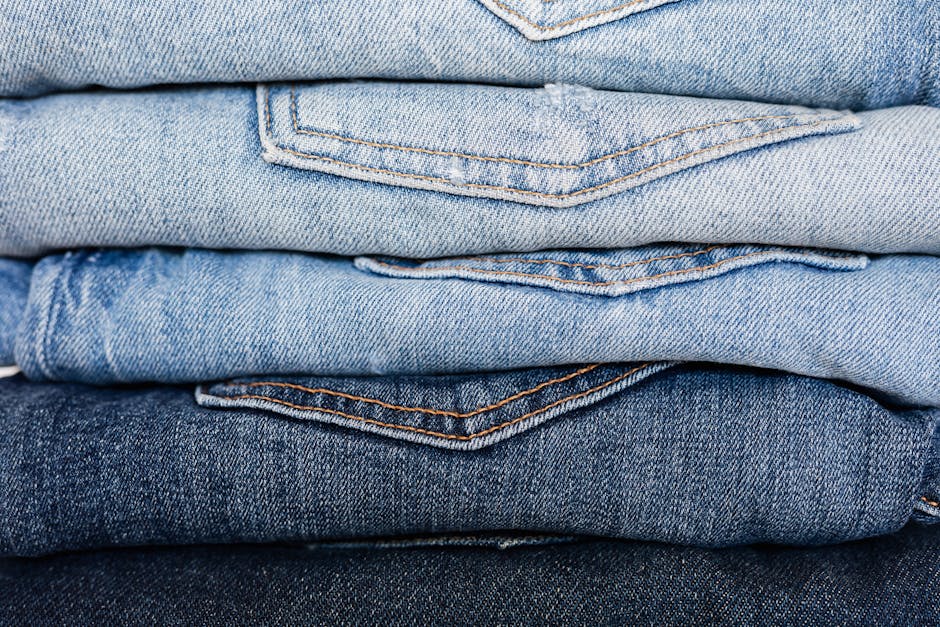Hemp Fabric: The Ancient Material Making a Modern Comeback
Introduction to Hemp Fabric: A Historical Perspective
Hemp fabric is not new. In fact, it’s one of the oldest materials used by humans for making clothes, ropes, and even paper. This tough, eco-friendly fabric comes from the cannabis sativa plant, but don’t let its origin fool you – hemp can’t get you high. Instead, it’s been a reliable resource for thousands of years. History shows us that as early as 8,000 BC, people recognized hemp’s value. It was essential in ancient civilizations, from China to Mesopotamia, for its durability and strength. Fast forward to today, and hemp is making a big comeback in the fashion industry and beyond. Why? Because it’s sustainable, requires less water than cotton, and is naturally resistant to pests, reducing the need for chemicals. This ancient material, once a staple in human craftsmanship, is now on the frontline of an eco-conscious movement, proving everything old can be new and valuable again.
The Environmental Benefits of Hemp Fabric
Hemp fabric is not just making a style statement; it’s shouting out loud for the environment too. Growing hemp is a win for the planet. It requires way less water than cotton—about half, to be more precise. That’s a big thumbs up in areas where water is scarce. Plus, hemp doesn’t need harsh chemicals to grow. No need for nasty pesticides here, which means cleaner soil and water.
But it doesn’t stop at growing. Turning hemp into fabric is less harmful to our planet compared to other materials. It produces fewer carbon emissions, so it’s kinder to the air we breathe.
Here’s a kicker – hemp fabric is biodegradable. Once it’s done serving its purpose, it can return to the earth without leaving harmful residues.
In a nutshell, choosing hemp fabric is like giving the earth a high five. It uses less water and chemicals, it’s cleaner to produce, and it doesn’t stick around as pollution. This ancient material is not just making a comeback; it’s paving the way for a greener future in fashion.
The Versatility and Uses of Hemp Fabric Today
Hemp fabric is not just about eco-friendliness; it’s a powerhouse of versatility used in both traditional and modern products. Today, you can find hemp in clothes, bags, shoes, and even home furnishings like curtains and beddings. Why? Because it’s strong, durable, and gets softer with each wash. It breathes well, making it perfect for summer clothes and sports wear. Designers love it for its texture and sustainability aspect. Beyond fashion, hemp proves useful in the automotive industry, used for paneling in cars due to its strength and lightweight nature. It’s also making strides in the construction sector, known as ‘hempcrete’, a bio-composite material. Whether it’s fashion or building, hemp fabric is showcasing its flexibility and eco-friendly tag in today’s world.
Comparing Hemp Fabric to Other Textiles
Hemp fabric stands tall when you stack it up against other textiles. Let’s break it down. Cotton might be king in many closets, but hemp wears the sustainability crown. Hemp grows fast, needs less water than cotton, and doesn’t demand pesticides. This means it’s not just tough on wear and tear but tough on environmental damage too. Then there’s synthetics, like polyester. Sure, they’re everywhere, but they’re not friends with the planet. Every wash releases microplastics into our oceans. Hemp? No such drama. It biodegrades, leaving no trace behind. Linen is a closer match, both made from plant fibers. But hemp has a one-up with durability and moisture-wicking properties, making it better for both your skin and the long haul. Breathable, UV-resistant, and anti-bacterial, hemp fabric offers what others can’t — a blend of eco-consciousness and practicality that’s hard to beat. So, when we compare hemp with other textiles, it’s not just about the fabric itself but what it represents for the future of fashion and our planet.
The Process of Making Hemp Fabric
Making hemp fabric begins with growing the hemp plant. Once fully grown, the next step is harvesting. Workers cut down the hemp stalks and bundle them together. These bundles then go through a process called retting. This process involves leaving the stalks out in the field to allow bacteria and moisture to break down the plant’s pith. This step is crucial because it separates the fiber from the inner core.
Next, comes the breaking process. In this step, machines or manual tools smash the retted stalks. This action further separates the fibers. After that, the fibers are combed in a process known as scutching. Scutching removes the unwanted parts and leaves behind long, soft hemp fibers.
The final step before weaving is carding. During carding, these long fibers are straightened and drawn into strands ready for spinning. After spinning, the hemp yarn is ready. This yarn is then woven or knitted to create hemp fabric.
From planting to weaving, making hemp fabric is a labor-intensive process. Yet, it’s been perfected over thousands of years, making hemp fabric durable, comfortable, and environmentally friendly.
Hemp Fabric in the Fashion Industry
Hemp fabric is turning heads in the fashion industry, big time. Why? First off, it’s tough as nails but soft on the skin. Imagine wearing armor that feels like a gentle hug. That’s hemp for you. Designers love it because it’s also kind to the planet. Growing hemp uses way less water than cotton and doesn’t need a cocktail of chemicals to thrive. So, clothes made from hemp are like a breath of fresh air for Earth.
But get this, it’s not just about being eco-friendly. Hemp fabric has a look that sets it apart. It brings a vibe that’s both rustic and refined, making it perfect for everything from casual tees to high-end fashion. This versatility has caught the eye of big names and small boutiques alike. They’re mixing hemp with other materials to craft outfits that aren’t just beautiful but also durable. Hemp doesn’t wear out fast; instead, it wears in, getting cozier with every wash.
Sure, it might cost a bit more upfront, but the payoff? Clothes that last longer, feel better, and do good for the planet. It’s a win-win-win. The fashion industry is always on the hunt for the next big thing, and hemp fabric is it. Sustainable, durable, and stylish, hemp is weaving its way back into the spotlight, proving that what’s old can be new and exciting again.
Durability and Maintenance of Hemp Clothing
Hemp clothing is tough. Really tough. It’s known for lasting years and handling wear and tear better than other fabrics. Why? Hemp fibers are incredibly strong. They resist pilling and keep their shape, which means your hemp clothes won’t stretch out or get those annoying little balls after a few washes. But just because it’s sturdy doesn’t mean it’s rough. With every wash, hemp fabric becomes softer, giving you that lived-in feel without losing its shape or quality.
Taking care of hemp clothing is straightforward. You don’t need any special detergents or treatments. Just wash it in cold water and air dry it if you can. This not only keeps the fabric in top condition but also saves energy. Ironing? Rarely needed. But if you must, do it on a low setting. Hemp can handle it, but why push it? One more thing - hemp is good at fighting off odors and bacteria, meaning you don’t have to wash it as often as other clothes. That saves water, time, and keeps your clothes looking new longer.
So, hemp clothes. Durable. Low maintenance. Eco-friendly. What’s not to love?
The Economic Impact of Hemp Fabric Production
Hemp fabric isn’t just a trend; it’s kickstarting a green revolution in the textile industry. Why does it matter? Hemp grows fast, uses less water, and doesn’t need pesticides. This means farmers can save money and help the planet. More jobs? You bet. From farm to fabric, hemp opens up new jobs in farming, processing, and manufacturing. Cheaper to produce than cotton, it’s a win for both the environment and the economy. But here’s the deal: high initial setup costs are a hurdle. Yet, once we get over this, the long-term benefits of hemp fabric production could mean big things for our wallets and our world.
Challenges and Misconceptions About Hemp Fabric
When we talk hemp fabric, people often mix it up with other materials or have the wrong idea about its qualities. First off, hemp’s connection to marijuana throws many off. Yes, they’re family but think distant cousins. Hemp won’t get you high. Its THC level (the stuff in marijuana that does get you high) is super low. Another misconception? That it’s rough and uncomfortable. Modern tech has evolved hemp into a soft, durable fabric that’s often compared to linen but gets even better with age and washes.
There’s also the legal challenge. Hemp’s rocky history with the law has made it tough for producers and consumers alike. Despite its legal status now in many places, the shadow of its past affects its growth and acceptance. Plus, its cultivation and processing into fabric need specific conditions and care, often misunderstood as being too demanding or not eco-friendly compared to other eco-friendly fabrics.
Lastly, cost. The upfront cost of hemp fabric can be higher due to its production process and the still-developing supply chain. Yet, considering its durability and longevity, hemp is an investment in sustainable fashion.
All in all, while hemp fabric faces hurdles, from confusion about its nature to legal and cost barriers, its strengths like durability, sustainability, and comfort, are making it a fabric of choice for a greener future.
Future Trends: The Growing Popularity of Hemp Fabric
Hemp fabric is not a new player on the field; it’s an ancient material making a strong comeback in today’s world. As people become more eco-conscious, the demand for sustainable and environmentally friendly materials in the fashion and textile industries skyrockets. Hemp fabric is riding high on this wave of change. It’s seen as a powerhouse of sustainability because it requires less water, no pesticides, and produces a high yield per acre compared to traditional cotton.
What’s more, advancements in technology are improving the softness and versatility of hemp fabric, expanding its uses beyond just clothing into accessories, home furnishings, and even automotive interiors. Designers and big brands are starting to incorporate hemp into their lines, signaling its growing acceptance and popularity.
Looking ahead, expect to see hemp fabric gain even more ground. It’s durable, eco-friendly, and versatile – qualities that fit perfectly with the growing trend towards sustainability and ethical fashion. Additionally, as legislation around hemp cultivation relaxes globally, its production will likely become more efficient and cost-effective, making hemp products more accessible to the average consumer. In essence, hemp fabric is stitching its way into the future of textiles, promising a greener, more sustainable world of fashion.


